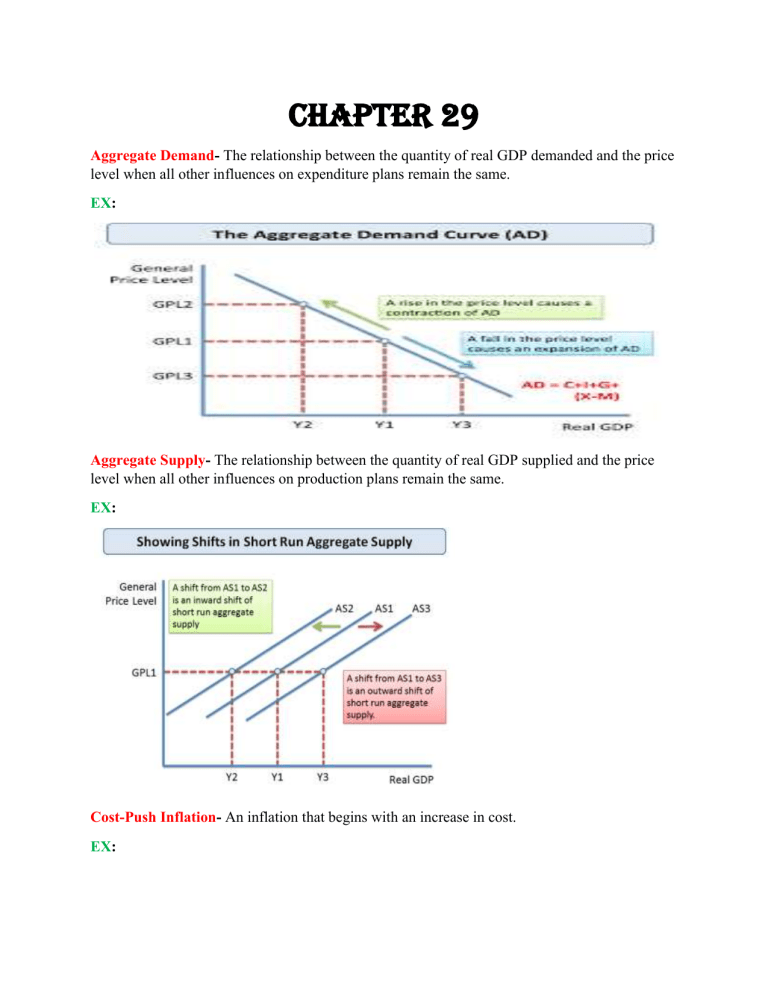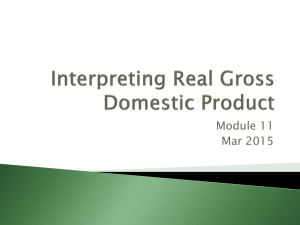
Chapter 29 Aggregate Demand- The relationship between the quantity of real GDP demanded and the price level when all other influences on expenditure plans remain the same. EX: Aggregate Supply- The relationship between the quantity of real GDP supplied and the price level when all other influences on production plans remain the same. EX: Cost-Push Inflation- An inflation that begins with an increase in cost. EX: Demand-Pull Inflation- Inflation that starts because aggregate demand increases. EX: Fiscal policy- Changing taxes, transfer payments, and government expenditure on goods and services. EX: Full-Employment Equilibrium- When equilibrium real GDP equals potential GDP. EX: Inflationary Gap- A gap that exists when real GDP exceeds potential GDP and that brings a rising price level. EX: Macroeconomic Equilibrium- When the quantity of real GDP demanded equals the quantity of real GDP supplied at the point of intersection of the AD curve and the AS curve. EX: Monetary Policy- Changing the quantity of money and the interest rate. EX: Real Business Cycle- A cycle that results from fluctuations in the pace of growth of labor productivity and potential GDP. EX: Aggregate demand fluctuations are the main source of the business cycle. The key reason is that the swings in aggregate demand occur more quickly than changes in the money wage rate that change aggregate supply. Recessionary Gap- A gap that exists when potential GDP exceeds real GDP and that brings a falling price level. EX: Stagflation- The combination of recession (decreasing real GDP) and inflation (rising price level). EX:





